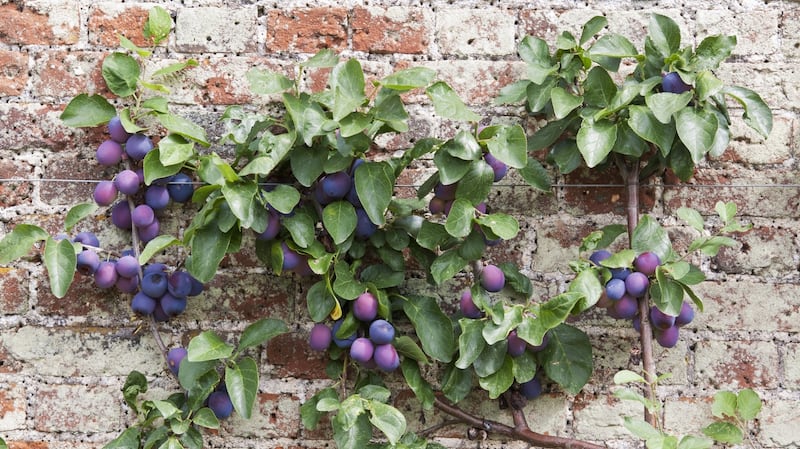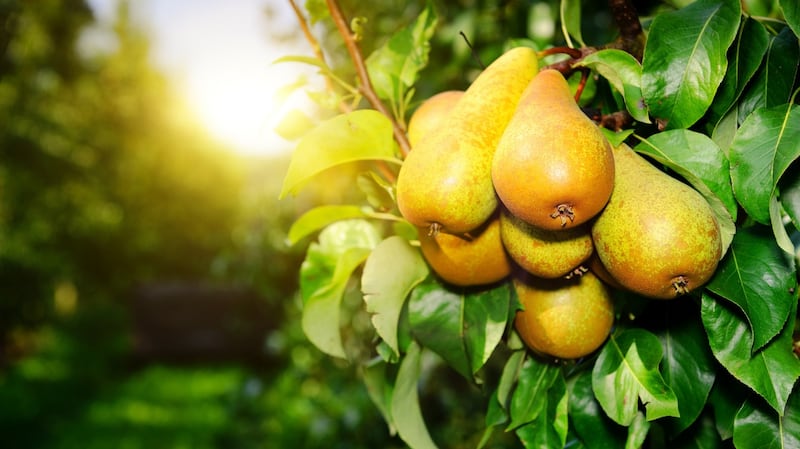If you’ve ever eaten a ripe plum straight from its parent tree or plucked it from the grassy ground beneath its branches, then you’ll know that it’s a thing of mouth-watering deliciousness, dripping with autumnal sweetness.
Similarly, grow your own apples and you’ll know that the bland, sugary taste and texture of a commercially produced, modern hybrid variety such as Pink Lady (also known as Cripps Pink) is the pomological equivalent of fast food. Comparing it to varieties such as Kerry Pippin, Ardcairn Russet, Irish Peach or Blenheim Orange, all prized for their distinctive flavours, aromas and textures, is like comparing a milkshake to a fine wine.
The same goes for homegrown pears, strawberries, currants and gooseberries, all of them remarkably different beasts to their shop-bought equivalents. Designed to cater to the magpie eye of the time-stressed, harried modern shopper, the latter are all too often bred for their flashy, catch-your-eye, synthetic beauty rather than their flavour and juiciness.

All of which brings me to the suggestion to grow at least some of your own fruit. More than a little tempted? If so, then the good news for Irish gardeners is that late October/November is an excellent time to get started. That’s especially true of this autumn after the much higher than normal rainfall of recent months, with most soils now nicely damp but not yet chilled by penetrating winter frosts, offering the perfect conditions for young plants to quickly establish healthy, vigorous root systems.
Final selection
Which are the most flavoursome, productive, disease-resistant varieties to grow? That’s not quite as simple a question as it seems. Before making your final selection, there are a number of factors to consider, including your garden or allotment’s growing conditions and microclimate as well as the amount of growing space that you can provide.
For example, can you give plants a fertile, free-draining soil, or is it one inclined to heaviness and winter wetness? Most fruit species hate the latter but you can greatly improve growing conditions by planting into wide, gently raised mounds enriched with horticultural grit and a little well-rotted manure and/or garden compost.
Or is your local climate one where there’s a risk of late spring frosts or squally, salty coastal gales searing the fruit blossom and leading to reduced yields? If so, then focus on the hardiest varieties and try to give plants a sunny, sheltered spot close to a sunny wall or one near the protective shelter of a hedge but far away enough from its shade and greedy root systems.
Perhaps the increasing problem of wild deer, which love to nibble on the young branches and shoots of fruit trees, fruit bushes, caned fruit and strawberries, is a potential threat? If so, are you happy to take on the cost of protecting your plants from them even if that includes the expense of electric fencing, which is sometimes the only effective method?
All of these different factors will have a bearing on the kind of fruit you can successfully grow.

So, of course, will the amount of growing space you can offer, which is not to say that fruit growing is only suitable for larger gardens. But by choosing trees grafted onto a range of dwarfing rootstock and/or using a variety of time-honoured pruning techniques, you can keep your fruit trees compact but still very productive. Examples of the latter include cordons, espaliers, fan, mini-fruit hedges and standards (lollipop-like trees).
Productive
Just bear in mind that the more compact the tree and/or the more dwarfing the rootstock that it’s grafted onto, the better growing conditions it will require in order to be properly productive. This is especially true of very dwarf varieties of fruit trees/bushes/plants suitable for growing in pots or tubs, examples of which include Raspberry Ruby Beauty, Sibley’s Patio Quince and the Lilliput range of standard fruit trees.
To keep these container-grown plants healthy and productive, the pot/tub needs to be a minimum of 60cm in diameter and depth, filled with a fertile, friable, moisture-retentive, soil-based compost with added horticultural grit to ensure good drainage and placed in a sunny, sheltered spot. You’ll also need to keep these pot-grown plants well watered and give the compost a top-dressing each spring.
Bear in mind also that many types of tree fruit require compatible pollinating partners, meaning that you’ll need to plant more than one tree. Even self-pollinating varieties (varieties that technically can produce their own fruit without the assistance of a nearby compatible variety) are often more productive when grown this way.
All of the above can sound more than a little technical, which is why it’s always a good idea to ask your garden centre/ nursery/supplier for advice before making your final selection.
To get you started, here's a shortlist of some of the most productive, delicious fruit varieties available, all of which will cope well with our cool, damp Irish climate. Recommended suppliers include all good Irish garden centres, Cork-based McNamara Rose Nurseries (021-4613733) and online suppliers such as irishseedsavers.ie, futureforests.ie and mrmiddleton.com
For a concise, easy-to-use beginner’s guide to growing your own fruit, pick up a copy of Dr Hessayon’s classic guide The Fruit Expert.

Apple: Discovery, James Grieve, Fiesta plus varieties mentioned above
Plum: Victoria, Opal, River's Early
Pear: Précoce de Trévoux, Invincible, Delwinor, Durondeau, Conference
Gooseberry: Hinnonmaki Red, Captivator, Invicta
Strawberry: Mara des Bois, Ostara, Albion (plant this month or wait until spring)
Raspberry: Polka, Tulameen, Glen Ample
Rhubarb: Timperley Early, Champagne, Victoria
Blackcurrant: Any of the Bens including Ben Connan and Ben Sarek
This Week in the Garden
Give your glasshouse or polytunnel a good clear-out, removing all dead plants and handpicking/bagging any damaged/discoloured foliage that could allow pests and diseases to overwinter.
Wash down surfaces, repair any damaged panes/torn plastic/dodgy doors and cut away any overhanging branches of nearby shrubs and trees before winter storms arrive. Whenever the latter are forecast, make sure to firmly close all doors and/or windows to reduce the risk of damage.
Continue planting ornamental spring bulbs such as narcissus, crocus, scilla, chionodoxa, allium, nectarascordum, fritillaria, camassia, Iris reticulata, hyacinth, anemone and erthyronium into the garden as well as into pots, tubs and window boxes. But, to reduce the risk of soil-borne disease, hold off planting tulip bulbs until another few weeks when soil temperatures will have fallen.













